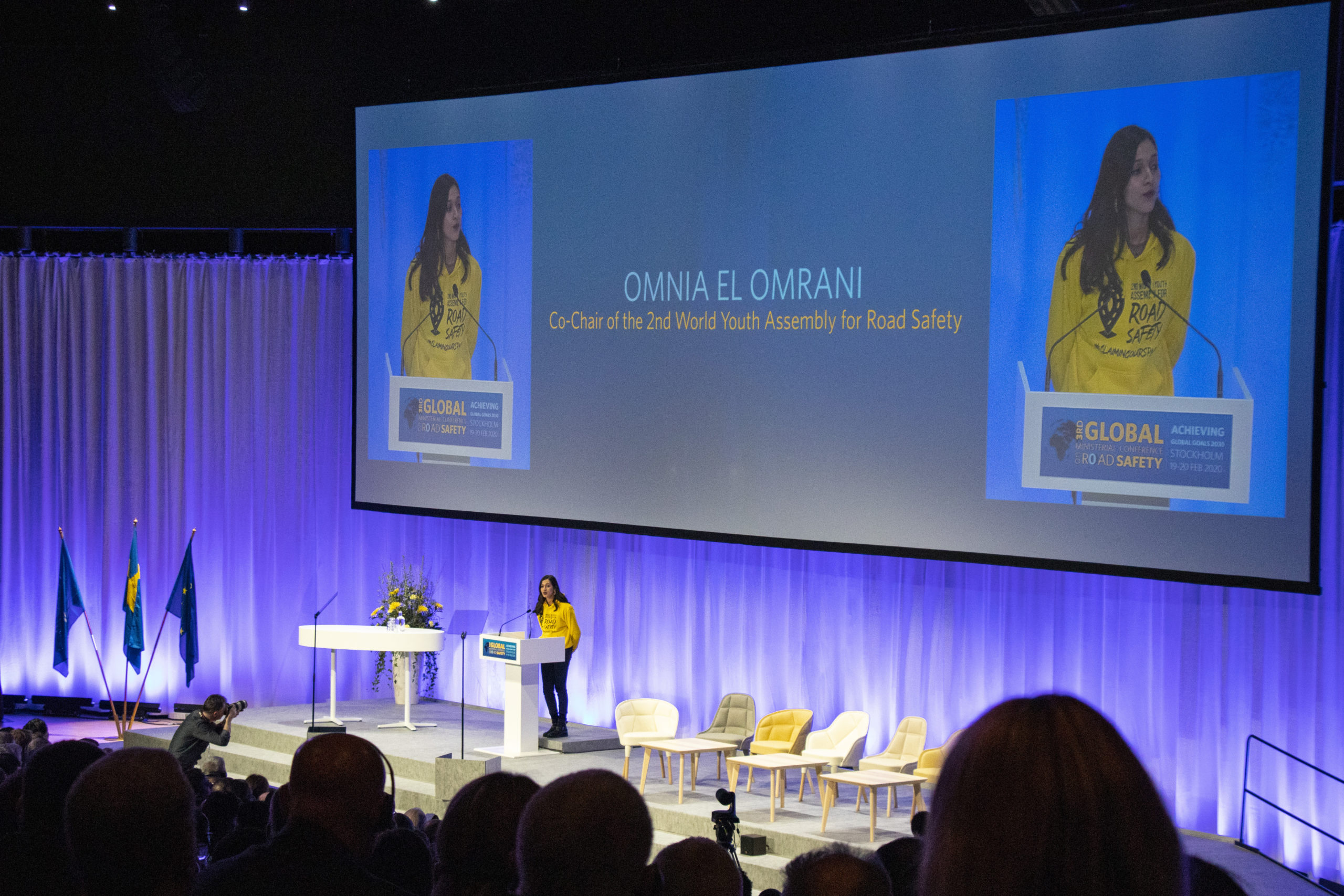Photo credit: Regeringskansliet Niklas Forström
Tom Bishop
Last week, I was one of more than 1,700 people gathered in Stockholm for the Third Global Ministerial Conference on Road Safety. Delegates included Ministers, senior officials from the United Nations agencies and representatives from civil society, academia and the private sector. More than 140 countries were represented – I met people from as far and wide as Belize, Kazakhstan, Myanmar and Zambia.
Living in Africa, I was happy that Ministers from 25 different African countries were in attendance – the largest representation of Ministers from any of the world’s regions.
I was especially delighted to hear strong commitment for road safety from two recently-appointed ministers – the Minister of State for Transport for Uganda, Joy Kafura Kabatsi, and the Minister of Transport for Ethiopia, Dagmawit Moges. Mrs Kabatsi expressed a particular interest in finding innovative solutions to improve motorcycle safety in Uganda, and Mrs Moges is committed to ensuring that road development puts the safety of the most vulnerable road users first.
The demonstration of commitment from Africa is very important. Of all world regions it is Africa that has the highest rates of road deaths – more than a third higher than the global average. The ways to improve road safety are known – reducing speed, protecting vulnerable road users – and as such, reducing road deaths is a political challenge. It requires commitment and cooperation. The highest level political commitment will be essential if African countries are to prevent deaths and disabilities.
The new motto in the global road safety community is ’50 by 30’, defining the target of a 50 per cent reduction in the number of deaths and serious injuries by 2030. This has brought road safety in line with the Sustainable Development Goals (SDGs). And road safety is recognised as being integral to delivering the SDGs, especially in areas such as health, climate, equity and prosperity.
For example, physical inactivity is ranked by the World Health Organization as the fourth leading risk factor for death, contributing to 3.2 million deaths worldwide per year. But if roads are not safe enough for children to walk or cycle to school, their opportunity for exercise is limited, negatively impacting their health and wellbeing.
We need innovative urban planners to re-imagine streets and cities to create a shift away from sedentary, polluting personal cars towards clean and safe modes of transport that incorporate active travel combining walking, cycling and public transport.
UKAid’s High Volume Transport Applied Research Programme is already supporting Amend to move in this direction. We are investigating the opportunities for introducing ‘woonerf’-style traffic calming in African cities, addressing the specific issues found across the continent, such as roadside vendors, high numbers of motorcycles, and very high numbers of child road users.
Children and youth were a focus of attention during the conference in Stockholm. Young people made their voices heard loud and clear. The World Youth Assembly for Road Safety, which took place the day before the main conference, saw over 200 youths representing over 74 countries, saying “Enough is enough: hear our voice”, with demands that include “Roads that do not kill our dreams”.
Two particularly vocal and impressive youths were from Africa – Omnia El Omrani from Egypt and Natasha Mwansa from Zambia. The energy and ideas of people like them will drive the changes that are needed.

Photo credit: Regeringskansliet Niklas Forström
Amend’s Kids’ Court progamme – through which we empower children to talk directly to dangerous drivers – received attention and interest from many of the conference’s participants. With the support of the High Volume Transport programme, Kids’ Court is being run in Mozambique, Tanzania and Malawi, and through the conference we now have requests to support local NGOs to adapt it to Zambia, Botswana, Kenya and Nigeria.
As Africa’s cities grow rapidly over the next ten years and more, I am excited to work with the likes of Mrs Joy, Mrs Moges, Omnia and Natasha to provide an environment where children and young people can travel safely and healthily, and have the opportunity to thrive!

